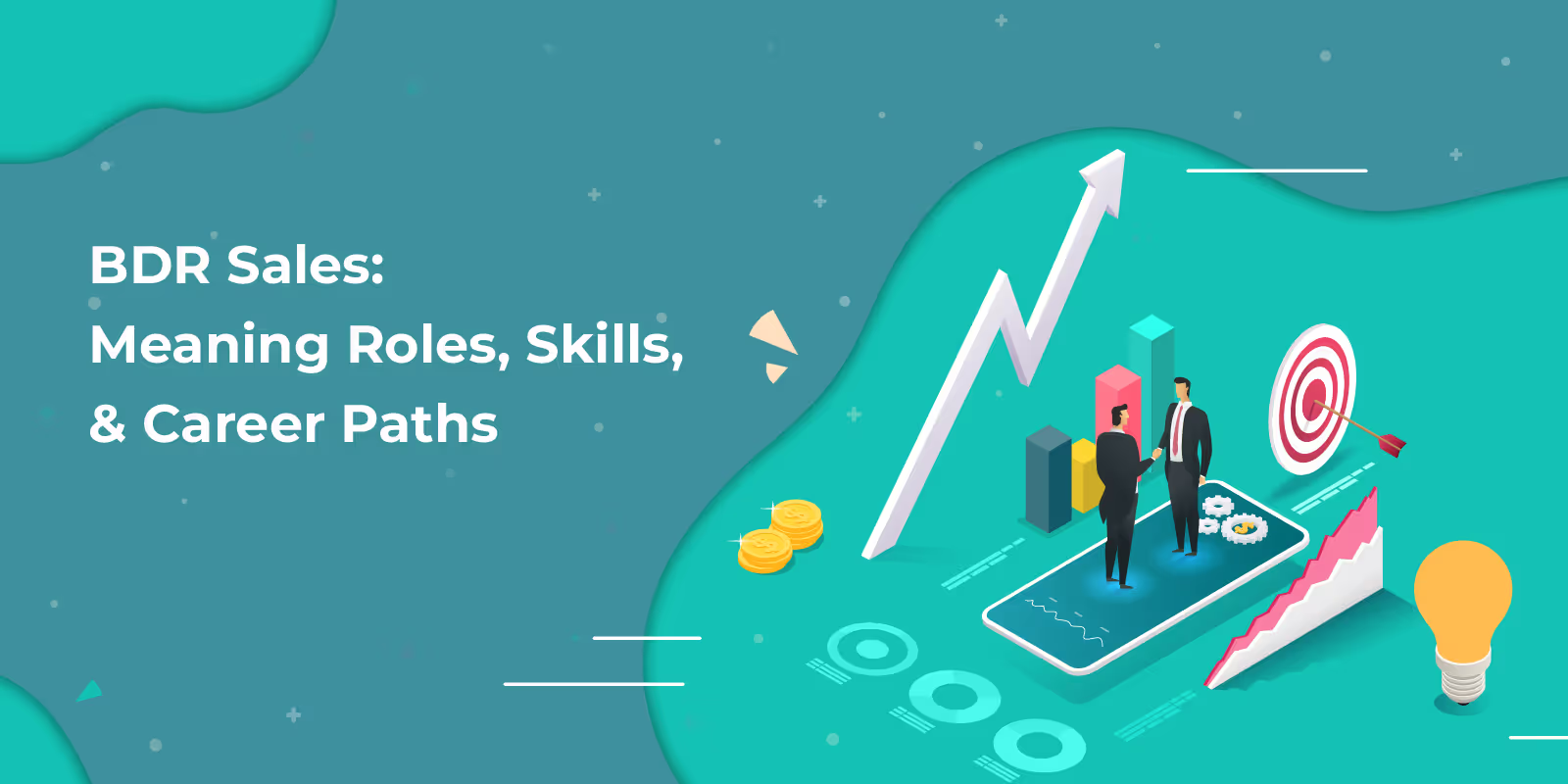
Blog
BDR Sales: Meaning Roles, Skills, and Career Paths
February 1, 2024


Key Insights
Imagine if there was a secret weapon in sales that could significantly amplify your business growth!
This isn't just wishful thinking—it's the reality when you harness the power of Business Development Representatives, or BDRs.
These are the unsung heroes in the sales world, strategically positioning businesses to not only meet but exceed their ambitious sales targets.
As the competitive landscape of sales continues to evolve, mastering BDR sales strategies becomes critical.
This blog will unravel the roles, skills, and tasks that define a BDR and illustrate how they are crucial in sculpting business success.
Ready to unlock these insights?
Let’s dive into the dynamic world of BDR sales and discover strategies that can transform your sales approach.
What is BDR Sales?
Business Development Representatives (BDRs) are at the forefront of the sales process, primarily focusing on generating new business opportunities.
But what exactly does this role entail, and why is it so crucial in sales?
A BDR is tasked with the initial steps of the sales funnel—identifying potential clients, reaching out, and setting the stage for deeper conversations.
Unlike account managers or direct sales professionals who close deals, BDRs are the explorers of the sales world, charting unknown territories to find valuable prospects.
The Difference Makes the Difference: While an account executive focuses on closing deals, a BDR ensures there are quality deals to close.
This division allows sales teams to be more efficient, enabling specialists to focus on what they do best—BDRs generate leads and nurture the early stages of relationships, while account executives drive them to closure.
A Brief History Trivia: The role of a BDR has evolved significantly with the rise of inbound marketing and sales technology. From cold calling to sophisticated CRM tools, BDRs today use a mix of technology and personal touch to engage potential clients effectively.
In essence, BDR sales is about opening doors and building bridges. It's a specialized, strategic role that fuels the sales pipeline, ensuring that the rest of the sales team has the opportunity to shine.
What Is an SDR?
An SDR, or Sales Development Representative, is a crucial role in the sales team primarily focused on generating new leads.
They are tasked with the initial part of the sales process: reaching out to potential customers, conducting initial assessments to gauge interest, and setting up meetings or demos for the sales team.
SDRs are like the explorers of the sales world, mapping out potential opportunities and laying the groundwork for future sales.

What are the Skills Required for a BDR in Sales?
To excel as a Business Development Representative, one must possess a unique blend of skills that facilitate effective prospecting and relationship building.
Here’s a quick checklist we’ve compiled for you:
1. Communication Skills:
- Clarity and Conciseness: Being able to articulate value propositions clearly and succinctly is vital. A BDR’s communication must be compelling to capture and maintain the interest of potential clients.
- Active Listening: This involves more than just hearing what prospects say, it’s about understanding their needs and responding appropriately to build trust and relationships.
2. Prospecting Skills:
- Research Proficiency: Effective BDRs are adept at using tools and resources to research potential leads, understanding industry trends, and identifying opportunities where others might not.
- Strategic Outreach: Crafting personalized outreach strategies that resonate with different personas is key to breaking through the noise in today’s saturated markets.
3. CRM Expertise:
- Data Management: Utilizing Customer Relationship Management (CRM) tools to organize and track interactions with prospects is essential for maintaining efficient follow-ups and nurturing leads.
- Analytical Skills: Interpreting data from CRM systems helps BDRs optimize their sales tactics and prioritize their efforts based on what's most effective.
4. Resilience and Perseverance:
- Handling Rejection: Sales is fraught with rejection; successful BDRs are those who don’t get discouraged and continue refining their strategies.
- Persistent Follow-up: The ability to stay on top of potential clients without being intrusive is a delicate balance that requires persistence and tact.
5. Adaptability:
- Changing Strategies: Sales environments are dynamic. Being able to adapt strategies based on feedback and market conditions is crucial.
- Continuous Learning: The best BDRs keep themselves updated with the latest sales techniques and industry knowledge to stay competitive.
These skills not only help BDRs succeed in their roles but also lay the groundwork for potential advancement into more senior sales positions.
Investing in these skills can significantly impact a BDR's effectiveness and, by extension, the success of the business.
What are the Key Tasks of a BDR in Sales?
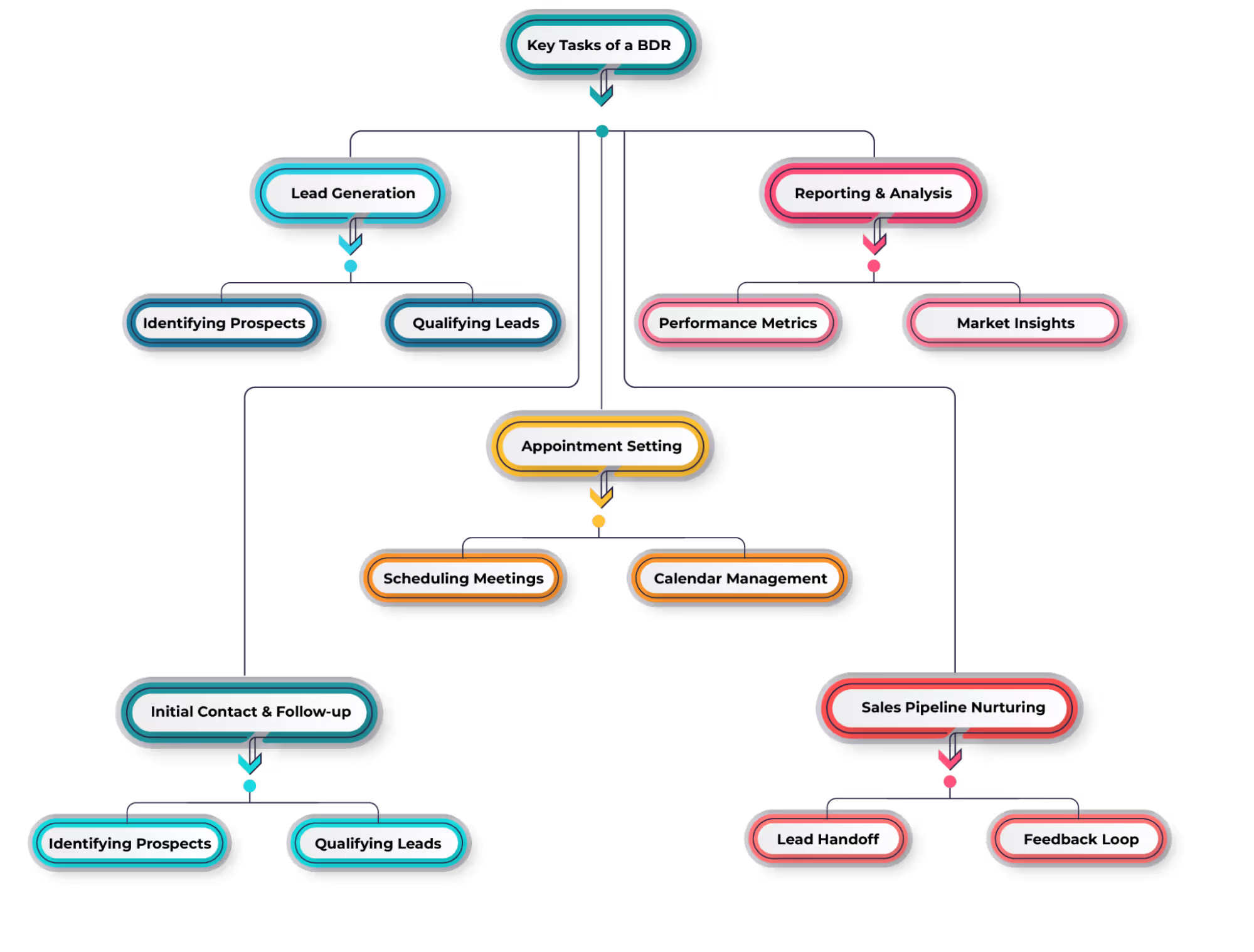
Business Development Representatives are tasked with specific responsibilities that are critical to the initial stages of the sales pipeline. Here’s a detailed look at these key tasks:
1. Lead Generation:
- Identifying Prospects: BDRs use a variety of tools and techniques to find potential clients who fit the target demographic of the business. This involves strategic use of social media, networking events, and data-driven tools to unearth valuable leads.
- Qualifying Leads: Not every prospect is a good fit. BDRs assess the potential of leads based on predefined criteria such as need, budget, and decision-making power, ensuring that only the most promising are forwarded along the sales pipeline.
2. Initial Contact and Follow-up:
- Outreach Campaigns: BDRs are often responsible for executing initial contact strategies through cold calls, emails, and social selling. Crafting personalized messages that resonate with each prospect is key to successful engagement.
- Persistent Follow-up: Following up is essential in converting initial contacts into active leads. BDRs manage regular follow-ups to keep prospects engaged, address concerns, and move them towards a sales conversation.
3. Appointment Setting:
- Scheduling Meetings: One of the primary goals for a BDR is to set appointments for sales executives. They need to ensure that these meetings are set with key decision-makers who have the authority and interest to buy.
- Calendar Management: Efficiently managing their own and their team’s calendars to accommodate these appointments is vital to ensure smooth progression through the sales funnel.
4. Sales Pipeline Nurturing:
- Lead Handoff: Once a lead is fully qualified, BDRs hand them off to the sales executives for further development and closure. This requires a seamless transition to maintain trust and continuity.
- Feedback Loop: Participating in regular feedback sessions with the sales team helps BDRs refine their approach based on what’s working and what’s not.
5. Reporting and Analysis:
- Performance Metrics: BDRs regularly report on their activities, the quality of leads generated, and the outcomes of their outreach efforts.
- Market Insights: Gathering insights from interactions with prospects and industry trends to inform sales strategies and contribute to the broader sales intelligence.
Each of these tasks plays a crucial role in building a robust sales pipeline, ensuring that the business consistently targets and engages with the right prospects at the right time.
What is the Role of BDR Sales in Business Success?
Business Development Representatives (BDRs) are pivotal in shaping the trajectory of a company's growth.
Their roles, focused on the early stages of the sales pipeline, lay the groundwork for the long-term success of business sales efforts.
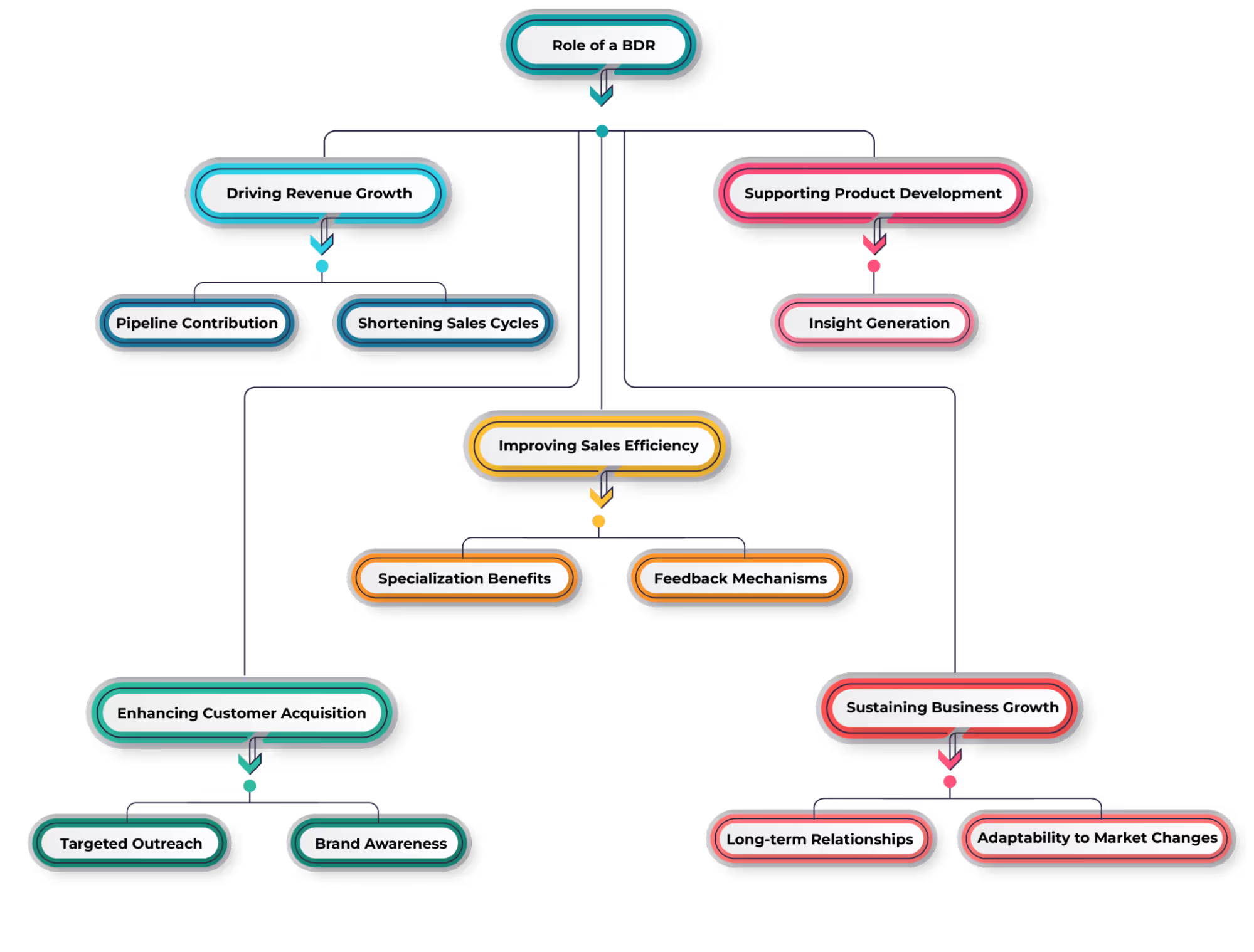
Here’s how BDRs contribute significantly to business success:
1. Driving Revenue Growth:
- Pipeline Contribution: BDRs are instrumental in filling the sales pipeline with high-quality leads, which are crucial for sustained revenue growth. By ensuring a steady flow of prospects, they enable the sales team to work efficiently towards closing deals.
- Shortening Sales Cycles: By engaging prospects early and nurturing them until they are ready to speak with a sales executive, BDRs help shorten the overall sales cycle, allowing businesses to close deals faster.
2. Enhancing Customer Acquisition:
- Targeted Outreach: Through targeted outreach efforts, BDRs connect with potential clients tailored specifically to the business's offerings, improving the quality and fit of each lead.
- Brand Awareness: Every interaction a BDR has with a potential customer serves as an opportunity to reinforce the brand and its values, gradually building market awareness and establishing a presence.
3. Improving Sales Efficiency:
- Specialization Benefits: Allowing sales executives to focus on closing deals rather than lead generation maximizes their efficiency and effectiveness, leveraging their skills where they have the most impact.
- Feedback Mechanisms: BDRs provide valuable feedback from the market to the sales and marketing teams, helping to refine strategies and approaches based on real customer interactions and needs.
4. Sustaining Business Growth:
- Long-term Relationships: By initiating relationships with potential clients, BDRs lay the foundation for long-term engagements, which are vital for sustainable growth.
- Adaptability to Market Changes: BDRs are often at the forefront of market trends and shifts, enabling them to adapt quickly and keep the company’s outreach efforts aligned with current market dynamics.
5. Supporting Product Development:
- Insight Generation: The direct interactions and feedback collected by BDRs can provide critical insights into customer needs and gaps in the market, informing product development and innovation.
By playing these roles, BDRs not only contribute directly to the sales figures but also enhance the overall strategic positioning of a business in its market.
They are truly the foundational pillars upon which scalable sales success is built.
Key Differences Between BDRs and SDRs
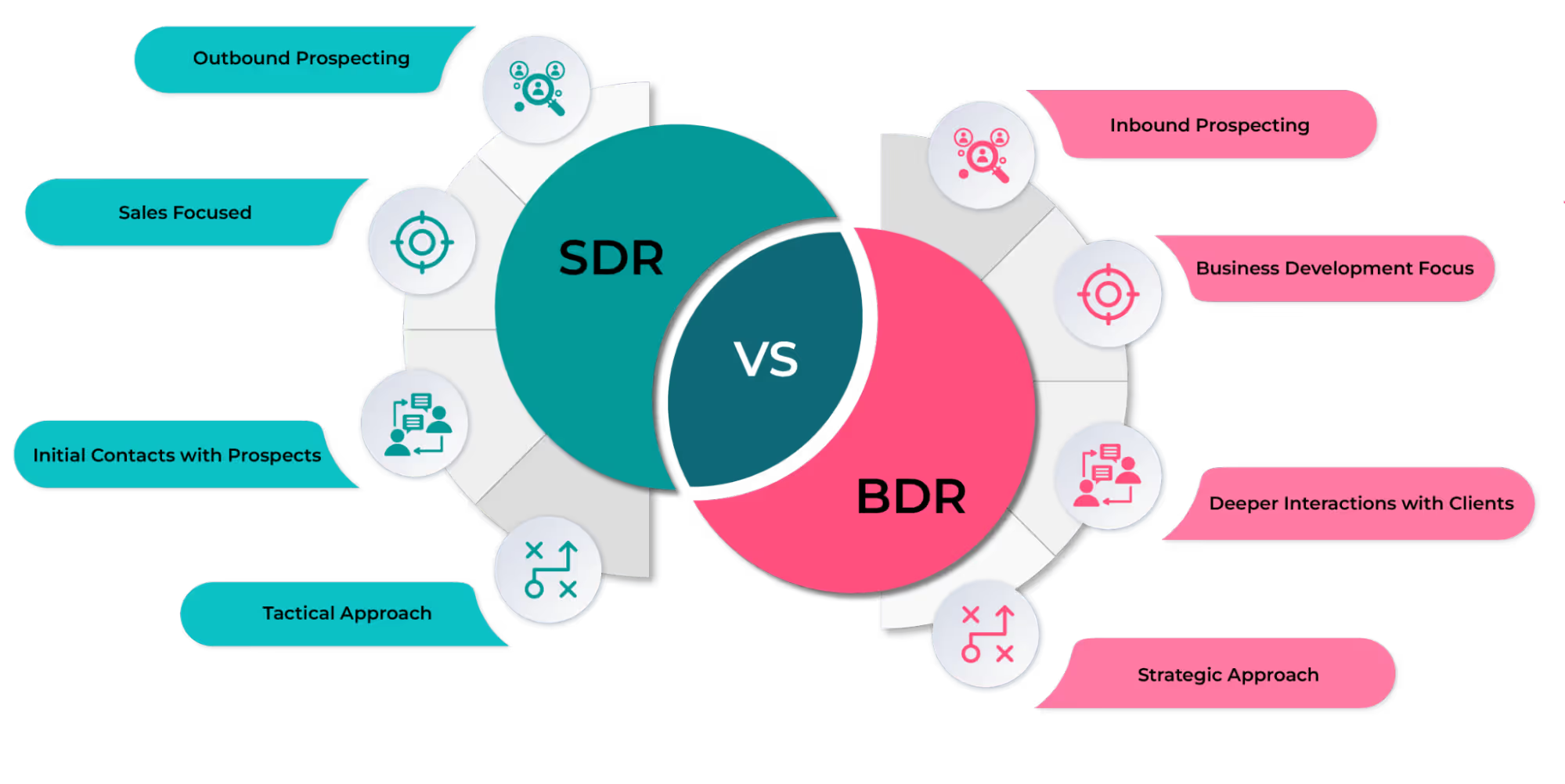
Inbound vs. Outbound Prospecting:
The main difference between BDRs and SDRs often lies in the direction of their prospecting efforts.
SDRs typically focus on outbound prospecting, reaching out to potential clients proactively.
In contrast, BDRs usually handle inbound leads, responding to prospects who have shown interest in the company's products or services through various channels.
Sales vs. Business Development Focus:
While SDRs are deeply entrenched in the sales process, BDRs often have a broader business development focus.
BDRs might engage in strategic partnerships, market research, and identifying new market opportunities beyond direct sales.
Depth of Customer Interaction
SDRs generally engage in brief, initial contacts with prospects, aiming to generate interest and pass qualified leads to account executives.
BDRs, on the other hand, may have deeper interactions with potential clients to understand their needs and how the business can serve them, which often involves a more consultative approach.
Strategic vs. Tactical Approach:
SDRs are typically more tactical, focusing on quantity and speed to maximize outreach.
BDRs’ approach is more strategic, aiming to cultivate fewer, but more substantial, relationships that could lead to significant business opportunities.
Comparing BDR and SDR Compensation and Career Paths
Compensation Structures for BDRs and SDRs:
Compensation for both BDRs and SDRs usually comprises a base salary plus performance-based bonuses.
However, because of their roles, BDRs might have bonus structures tied to the long-term value of the relationships they develop, while SDRs often earn incentives based on the volume of qualified leads or meetings.
Career Progression Opportunities for BDRs and SDRs:
Career progression for BDRs and SDRs can be quite dynamic.
SDRs can move into account executive roles, focusing on closing sales and managing client accounts.
BDRs might progress into roles that involve broader business development strategies, like channel development or strategic partnerships management.
Best Practices for BDR Success:
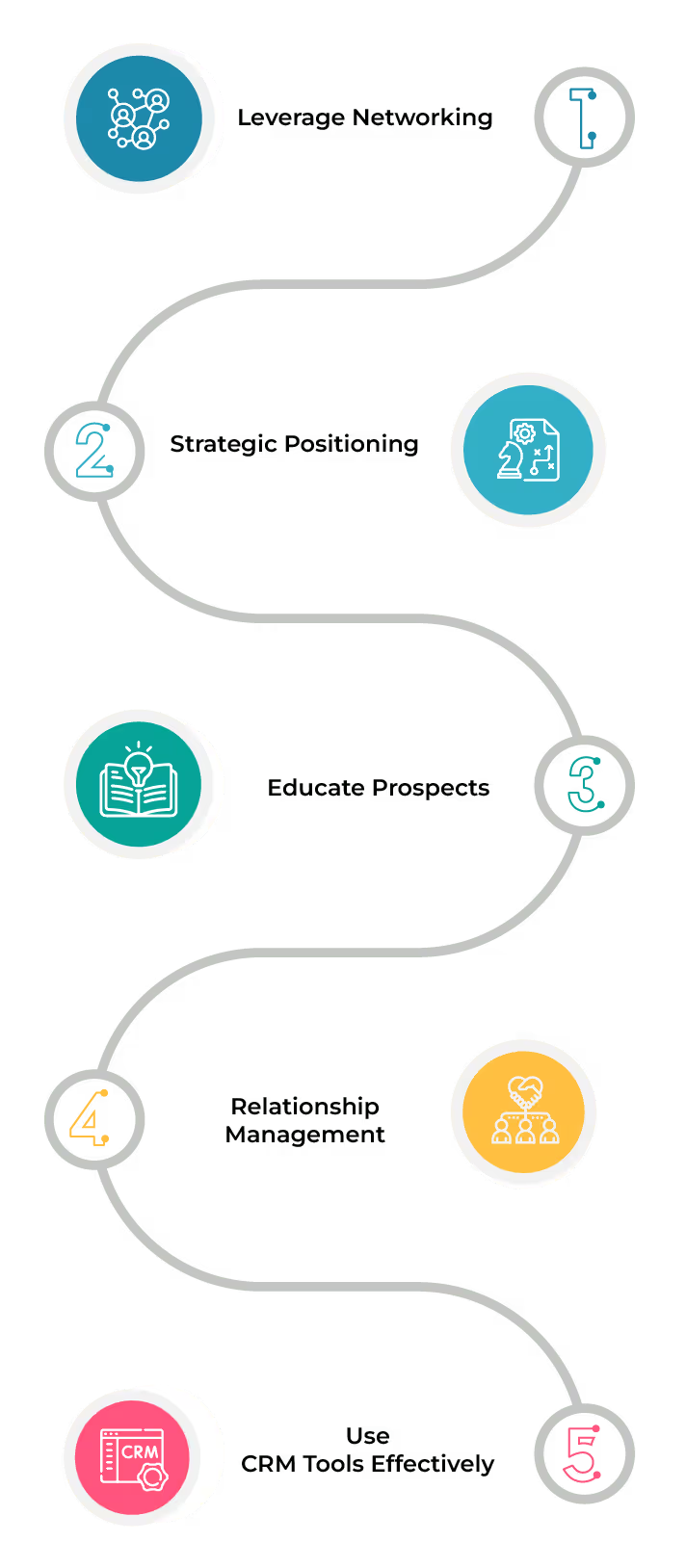
BDRs are pivotal in creating and enhancing business opportunities. To excel in this role, BDRs should adopt the following best practices:
- Leverage Networking: Build an extensive network inside and outside the industry. Attend industry conferences, seminars, and webinars to connect with potential clients and partners.
- Strategic Positioning: Understand the strategic objectives of your organization and align your efforts accordingly. Focus on sectors and companies that offer the highest potential for strategic partnerships or new business avenues.
- Educate Prospects: Instead of hard selling, focus on educating potential clients about how your product or service can solve their problems or enhance their own business processes.
- Relationship Management: Develop and maintain strong relationships with key stakeholders in prospective client companies. Regular follow-ups and personalized communication can help in nurturing these relationships.
- Use CRM Tools Effectively: Utilize Customer Relationship Management (CRM) tools to track interactions, manage appointments, and analyze client data to optimize your outreach strategies.
Best Practices for SDR Success:
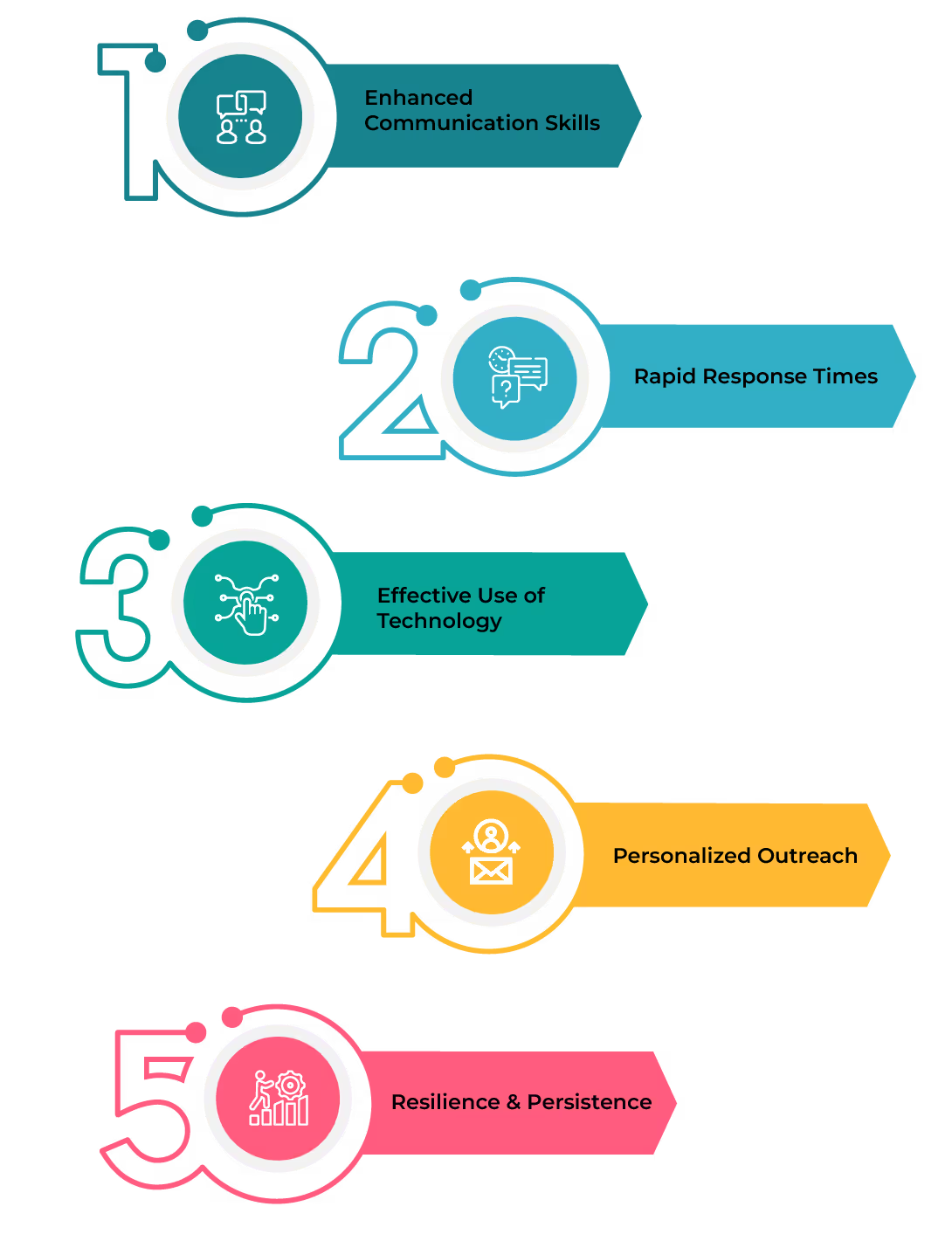
SDRs need to be highly efficient at generating leads and qualifying them swiftly. The following best practices can significantly boost their performance:
- Enhanced Communication Skills: Develop concise and clear communication skills to convey value propositions effectively. Practice active listening to better understand potential client needs.
- Rapid Response Times: Quickly follow up on leads. A prompt response can significantly increase the chances of converting a lead into a qualified prospect.
- Effective Use of Technology: Employ sales acceleration tools to automate repetitive tasks like email follow-ups or scheduling meetings, allowing more time for high-value activities.
- Personalized Outreach: Tailor your communication based on the lead’s industry, company size, or individual role to make your messages more relevant and engaging.
- Resilience and Persistence: Be persistent and resilient in the face of rejection. Success in an SDR role often requires enduring frequent nos to get to a yes.
Which is better, SDR or BDR?
The answer depends on your career goals and personal strengths.
If you thrive on making quick connections and moving fast, SDR might be your path. If you prefer building deeper relationships and strategic planning, BDR could be a better fit.
Do SDRs or BDRs make more money?
It can vary by industry and company, but generally, the potential to earn can be slightly higher for BDRs if they are involved in closing large deals or high-value accounts
Though SDRs also have strong earning potential through volume-based bonuses.
Is a BDR below an SDR?
Not necessarily, they are different roles with unique responsibilities and skills.
The perception of hierarchy might depend on the specific business context, but both roles are critical to the business's sales and development efforts.
What are the differences between ADR, BDR, and SDR?
In the sales structure of many organizations, ADRs, BDRs, and SDRs play distinct yet equally vital roles.
Account Development Representatives (ADRs) concentrate on deepening existing client relationships by identifying upsell and cross-sell opportunities, thereby maximizing the value of current accounts.
Business Development Representatives (BDRs) are focused on generating new business opportunities through strategic outreach, partnerships, and networking. Their role is critical in expanding the business's reach and entering new markets.
On the other hand, Sales Development Representatives (SDRs) are primarily tasked with initiating contact with potential clients. They qualify these leads and nurture them through the initial stages of the sales funnel, setting the stage for deeper engagement by sales executives.
Each of these roles is tailored to specific aspects of sales and client interaction, emphasizing the diverse strategies companies employ to grow and sustain their business.
ReKennect : Stay ahead of the curve!
Subscribe to our bi-weekly newsletter packed with latest trends and insights on incentives.
Thank you! Your submission has been received!
Oops! Something went wrong while submitting the form.
Your data is in safe hands. Check out our Privacy policy for more info















